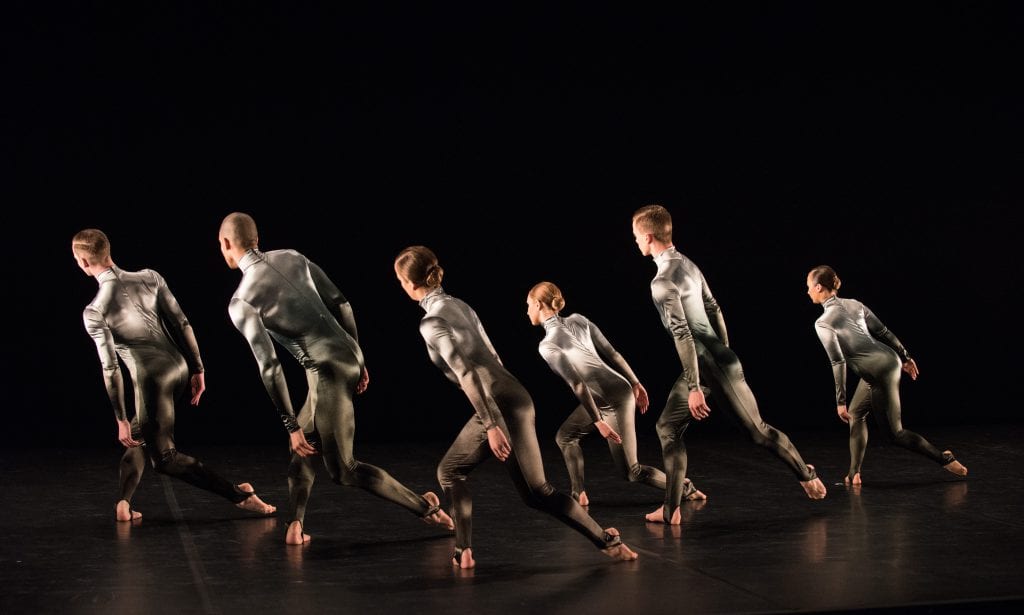Was I hallucinating long ago or did I really once see punk enfant terrible Michael Clark perform in his own show wearing big black boots, a leotard cut out to reveal his bare bottom, and maybe there was even a tutu too. I think I did. So what has happened?
There’s no knowing, given the triple bill now on at the Barbican where he is an artistic associate. He was always a stickler for detail, a perfectionist, a magnet for brilliant dancers at the top of their game. That is why he himself has made it to the top. Meanwhile, the wild child has vanished, has grown up into something that you might fear would smack you if you put a foot wrong.
Clark’s hallmark perfectionism has become neatness. One has the certainty that his dancers can do anything asked of them. How to sum up the main gruelling demand he makes of them? Control. Perhaps that is the point he is making, contrasting his perfectly formed choreography with the rough, organic potential of the music that he has his dancers dance to. If that is the aim, it doesn’t quite come off. It’s a long time since I’ve seen a contemporary performance where the dancers are dancing to the music, using form to illustrate the sound and the beat, but not the meaning, or where the point is to stay in time and in sync with the other dancers.
The evening is divided into three parts, each dominated by a selection of recorded music. The order of play is Eric Satie, Pattie Smith, David Bowie.
First there is Satie. The solo piano piece that Clark has chosen could be a parody of Satie but, and here’s the rub, there’s no humour or beauty or feeling in the music, at least not in the brittle way it is performed. The dancers are decked out like piano keys and move in time to a monotonous beat which goes on and on until the very end when there is some welcome, discordant, relief. When you think of Satie you probably think of delicate emotion in minimalism, beauty in simplicity, the wit of, say, a blank canvas with a fine black line that falls off the edge; say, Miro in sound. But while Clark gives us simple beauty, there is no delicacy and no wit, except for one odd, unexplained moment. The length of the piece makes it difficult to attend to the fact that what the dancers are doing with their bodies is extraordinary. Or is it not the duration that is the problem, but the interpretation of the score? Either way, after this ploddy start, by virtue of the contrast, things look up.
The second work includes Patti Smith’s title song from “Horses”, from whose last line the title of the whole show is derived. Charles Atlas’s kinetic video is a terrific replica of a kind of monochrome trip one might have had in the seventies, and the dancers now and then join up with the projected images. But again, there is that tight tidiness, epitomised, say, by the shiny costumes, stiff backs, straight arms, remarkable plank lifts and holds. Not for an instant does the video or the choreography comment upon the contrasting passion, horror and out-of-control theme of Smith’s superb song.
The final work, a tribute to Bowie, is gentler. Of the triptych, it is the most likeable piece and the most touching because the music from Blackstar brings us alongside Bowie, mourning with him the certainty of his imminent death. Again, the tenderness is in the music, not the dancers, who are perfectly formed, sleek creatures, automata from outer space, exactly articulated.
The packed house was in raptures, so no problem there. But the glimpses in the present work of wanderings down memory lane, a lane that he didn’t wander down in the punk days, made me wish that he would bring back something of the crazy boy into the here and now.



